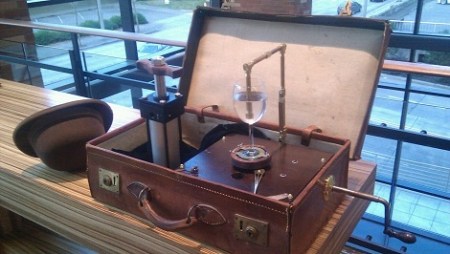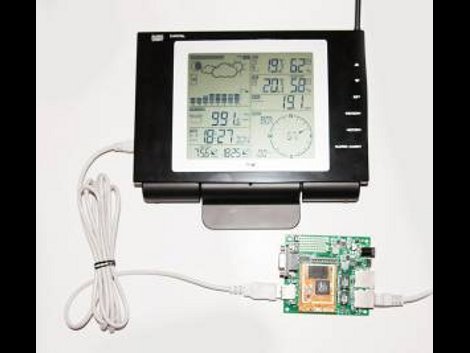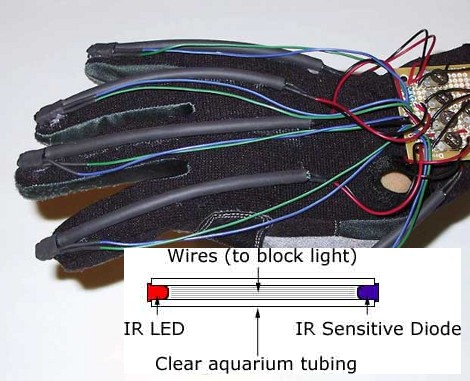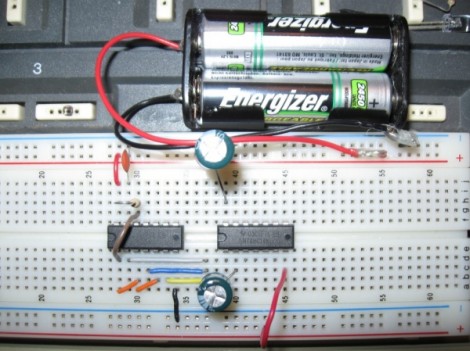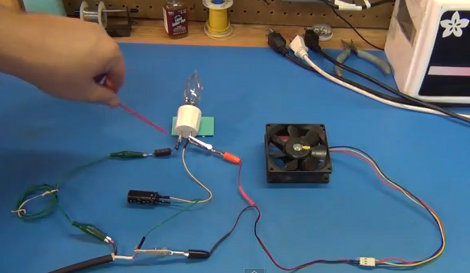
[Todd Harrison] needed a way to run a 12 volt PC fan from mains voltage. Well, we think he really just needed something to keep him occupied on a Sunday, but that’s beside the point. He shows us how he did this in a non-traditional way by using the resistive load of an incandescent light bulb, a diode, and a capacitor to convert voltage to what he needed. You can read his article, or settle in for the thirty-five minute video after the break where he explains his circuit.
The concept here is fairly simple. The diode acts as a half-wave rectifier by preventing the negative trough of the alternating current from passing into his circuit. The positive peaks of the electricity travel through the light bulb, which knocks down the voltage to a usable level. Finally, the capacitor fills the gaps where the negative current of the AC used to be, providing direct current to the fan. It’s easy to follow but the we needed some help with the math for calculating the correct lightbulb to use to get our desired output current.
Continue reading “Light Bulb, Diode, And Capacitor Step Mains Down To 12V DC”

